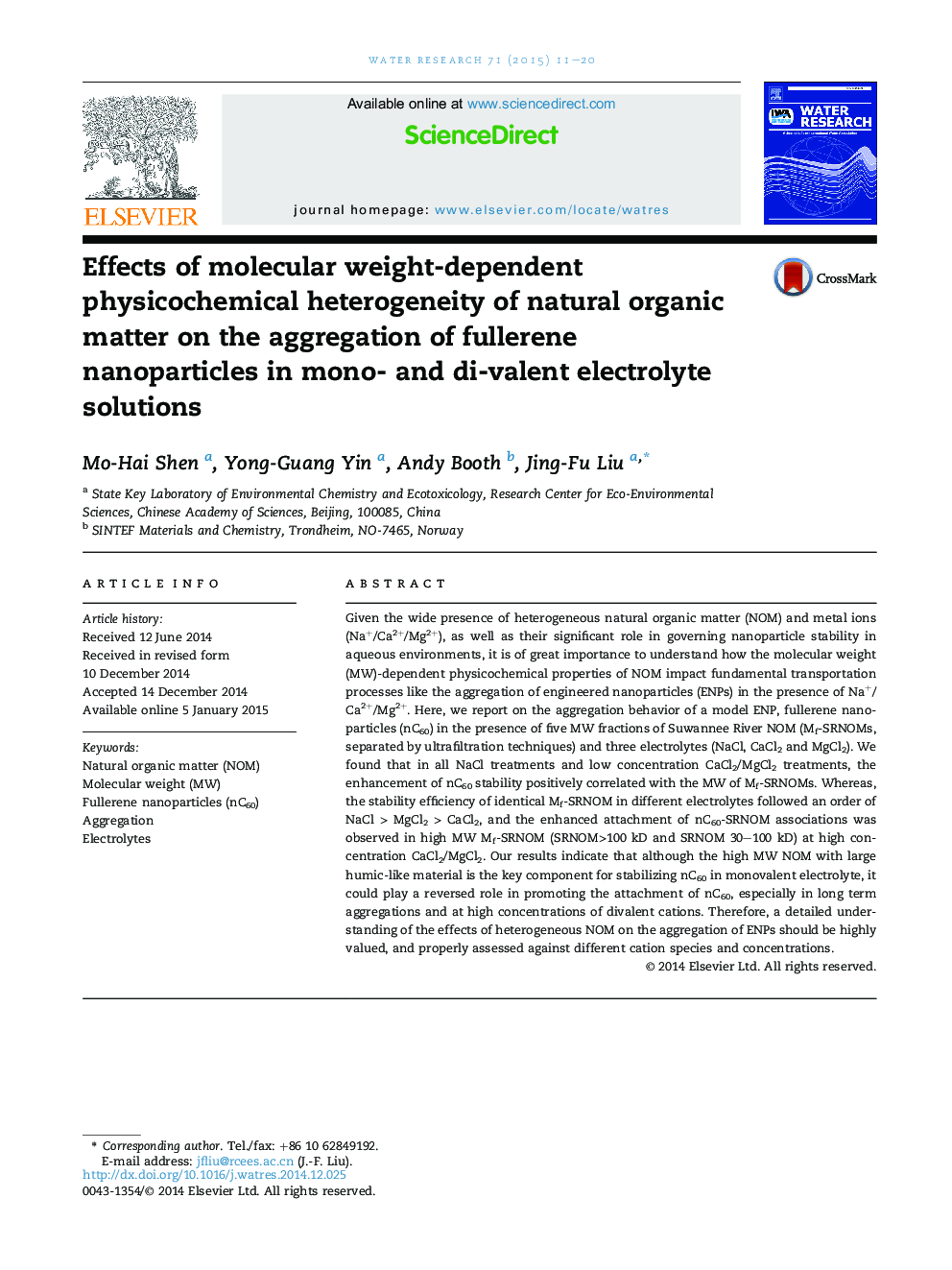| Article ID | Journal | Published Year | Pages | File Type |
|---|---|---|---|---|
| 4481164 | Water Research | 2015 | 10 Pages |
•Enhancement of nC60 stability positively correlates with the MW of NOM in NaCl.•nC60 stability in NOM is electrolyte dependent and follows NaCl > MgCl2> CaCl2.•High MW NOMs stabilize nC60 in NaCl more effectively than low MW counterparts.•High MW NOMs promote nC60 attachment and thus aggregation in divalent cations.
Given the wide presence of heterogeneous natural organic matter (NOM) and metal ions (Na+/Ca2+/Mg2+), as well as their significant role in governing nanoparticle stability in aqueous environments, it is of great importance to understand how the molecular weight (MW)-dependent physicochemical properties of NOM impact fundamental transportation processes like the aggregation of engineered nanoparticles (ENPs) in the presence of Na+/Ca2+/Mg2+. Here, we report on the aggregation behavior of a model ENP, fullerene nanoparticles (nC60) in the presence of five MW fractions of Suwannee River NOM (Mf-SRNOMs, separated by ultrafiltration techniques) and three electrolytes (NaCl, CaCl2 and MgCl2). We found that in all NaCl treatments and low concentration CaCl2/MgCl2 treatments, the enhancement of nC60 stability positively correlated with the MW of Mf-SRNOMs. Whereas, the stability efficiency of identical Mf-SRNOM in different electrolytes followed an order of NaCl > MgCl2 > CaCl2, and the enhanced attachment of nC60-SRNOM associations was observed in high MW Mf-SRNOM (SRNOM>100 kD and SRNOM 30–100 kD) at high concentration CaCl2/MgCl2. Our results indicate that although the high MW NOM with large humic-like material is the key component for stabilizing nC60 in monovalent electrolyte, it could play a reversed role in promoting the attachment of nC60, especially in long term aggregations and at high concentrations of divalent cations. Therefore, a detailed understanding of the effects of heterogeneous NOM on the aggregation of ENPs should be highly valued, and properly assessed against different cation species and concentrations.
Graphical abstractFigure optionsDownload full-size imageDownload high-quality image (175 K)Download as PowerPoint slide
